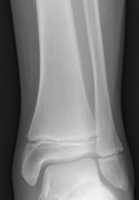Addiction, Author Interviews, Cocaine, Opiods, Primary Care / 03.01.2019
Urine Tests Useful in Primary Care Monitoring of Opioid and Cocaine Use
MedicalResearch.com Interview with:
Sarah M. Bagley MD, MSc
Assistant Professor of Medicine and Pediatrics
Director, CATALYST Clinic
Boston University School of Medicine/Boston Medical Center
Boston, MA
MedicalResearch.com: What is the background for this study? What are the main findings?
Response: Urine drug testing is a routine part of the management of primary care patients with opioid use disorder treated with medications such as buprenorphine. In addition, most providers also ask patients about recent drug use.
The point of this study was to see the agreement between the urine drug testing and what patients told a nurse and whether that changed the longer a patient was in treatment. We found that truthful disclosure of opioid and cocaine use increased with time in treatment and that urine drug tests are a useful tool to monitor patients.
(more…)























 Josephine Funck Bilsteen, MSc
Department of Pediatrics, Hvidovre University Hospital, Hvidovre,
Section of Epidemiology, Department of Public Health
University of Copenhagen
Copenhagen, Denmark
MedicalResearch.com: What is the background for this study? What are the main findings?
Response: The background of this study is that there is increasing recognition of the longer-term health and social outcomes associated with preterm birth such as independent living, quality of life, self-perception and socioeconomic achievements. However, much less is known about differences in education and income among adults born at different gestational weeks in the term period.
In this study shorter gestational duration, even within the term range, was associated with lower chances of having a high personal income and having completed a secondary or tertiary education at age 28 years. This is the first study to show that adults born at 37 and 38 completed weeks of gestation had slightly lower chances of having a high income and educational level than adults born at 40 completed weeks of gestation.
Josephine Funck Bilsteen, MSc
Department of Pediatrics, Hvidovre University Hospital, Hvidovre,
Section of Epidemiology, Department of Public Health
University of Copenhagen
Copenhagen, Denmark
MedicalResearch.com: What is the background for this study? What are the main findings?
Response: The background of this study is that there is increasing recognition of the longer-term health and social outcomes associated with preterm birth such as independent living, quality of life, self-perception and socioeconomic achievements. However, much less is known about differences in education and income among adults born at different gestational weeks in the term period.
In this study shorter gestational duration, even within the term range, was associated with lower chances of having a high personal income and having completed a secondary or tertiary education at age 28 years. This is the first study to show that adults born at 37 and 38 completed weeks of gestation had slightly lower chances of having a high income and educational level than adults born at 40 completed weeks of gestation. 






